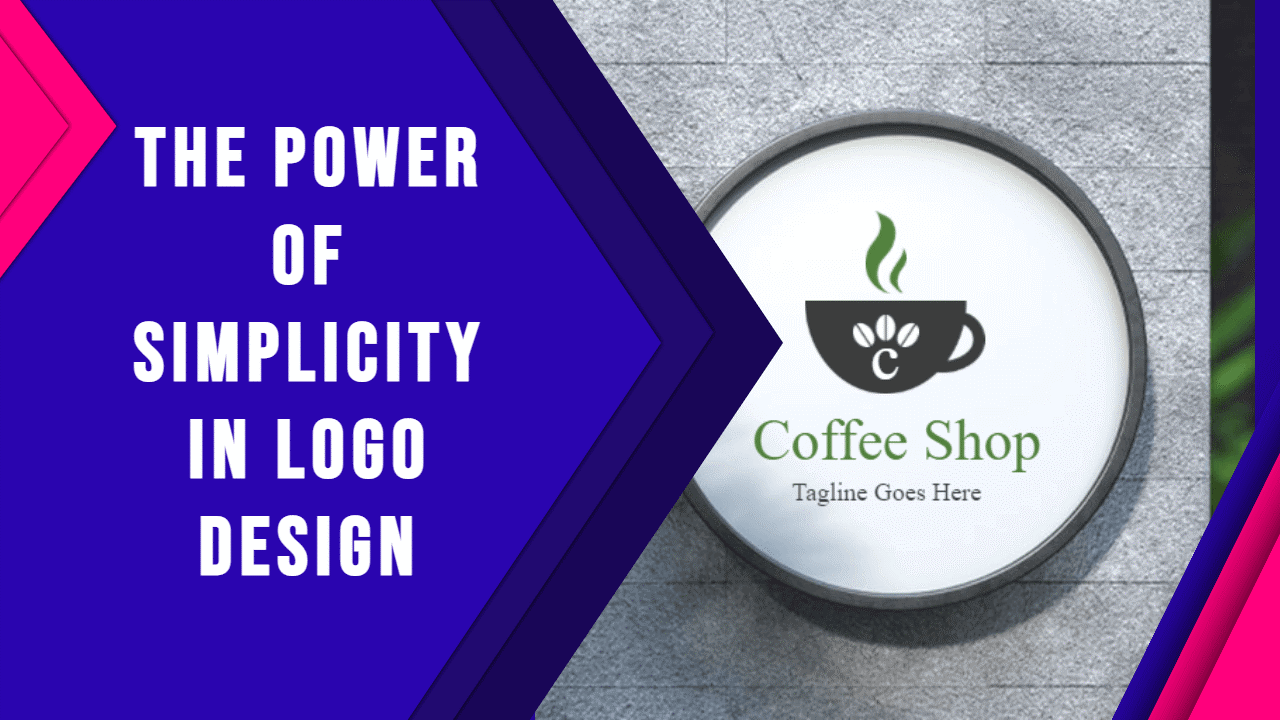In the ever-evolving landscape of brand identity, the role of a well-crafted logo cannot be overstated. As the visual embodiment of a brand, a logo serves as the first point of contact with consumers. In this intricate dance of design, the power of simplicity in logo design emerges as a force to reckon with. In addition, a well-crafted logo serves as the visual face of a brand, making simplicity a powerful ally in creating a lasting impression.
The Impact of Simplicity in Logo Design
Instant Recognition
The first glance at a logo often decides its fate. A simple logo design allows for immediate recognition, ensuring that the brand sticks in the viewer’s mind. Think of iconic logos like Apple or Nike – minimalistic, yet instantly identifiable.
Versatility in Applications
Simplicity in logo design grants logos versatility. Whether it’s on a massive billboard or a small business card, a simple logo maintains its integrity and remains recognizable across various platforms.
Memorable Brand Image
Memorability is a key factor in brand success. Simple logos, with their uncomplicated designs, tend to leave a lasting imprint on consumers’ minds. This memorability fosters a sense of trust and familiarity.
Elements of a Simple Logo
Minimalistic Design
At the core of simplicity lies minimalism. Stripping away unnecessary elements, a simple logo communicates a clear message without overwhelming the audience. This often involves a focus on clean lines and uncluttered visuals.
Thoughtful Color Choices
While simplicity may imply a lack of color, thoughtful color choices play a crucial role. A simple logo can still be vibrant and impactful if the colors are chosen with care, reinforcing the brand’s personality.
Clear Typography
Typography contributes significantly to a logo’s simplicity. Clean, readable fonts enhance the logo’s overall clarity, ensuring that the brand’s name or tagline is easily understood.
Case Studies
Successful Brands with Simple Logos
Examining successful brands like Google, FedEx, and McDonald’s reveals the power of simplicity. These logos are timeless and have become synonymous with the respective brands they represent.
Analyzing Design Choices
Delving into the specific design choices of these brands showcases the careful consideration given to simplicity. Each element is purposeful, contributing to a logo that stands the test of time.
The Psychology Behind Simplicity in Logo Design
Cognitive Ease
From a psychological standpoint, simplicity aids cognitive ease. People are naturally drawn to things that are easy to process and understand. A simple logo eliminates confusion, fostering a positive perception of the brand.
Consumer Perception
Consumers often associate simplicity with honesty and transparency. A straightforward logo design can convey authenticity, building a connection between the brand and its audience.
The Simplicity vs. Complexity Debate
Striking the Right Balance
While simplicity is powerful, finding the right balance is crucial. Some brands thrive on complex, intricate logos. Striking a balance that aligns with the brand’s identity and target audience is the key to effective design.
Common Pitfalls to Avoid
Overly simplistic designs run the risk of being forgettable. It’s essential to avoid stripping away elements to the point where the logo loses its uniqueness. Balancing simplicity with distinctiveness is a delicate art.
The Role of Simplicity in SEO
Enhanced User Experience
Simplicity extends beyond the visual realm – it influences the user experience. A simple, intuitive logo contributes to a positive online experience, which, in turn, aids in SEO efforts.
Mobile-Friendly Design
With the rise of mobile browsing, logos need to be adaptable to various screen sizes. Simple logos, with their uncomplicated designs, translate well to smaller screens, ensuring a consistent brand image.
DIY Tips for a Simple Logo
Choosing the Right Elements
DIY logo design is a popular choice for startups and small businesses. Choosing simple, meaningful elements and avoiding unnecessary embellishments can result in an effective logo.
Tools and Resources
Numerous online tools and resources cater to DIY designers. Platforms like Canva and Adobe Spark offer user-friendly interfaces, allowing individuals to create professional-looking, simple logos.
Hiring a Professional Designer
Finding the Right Designer
For those seeking a custom logo, hiring a professional designer is the route to take. Researching and selecting a designer with a portfolio aligned with the brand’s vision ensures a collaborative and successful process.
Collaborative Process
Working with a designer allows for a collaborative process. Clearly communicating the brand’s values and preferences ensures the final design is not only simple but also resonates with the brand’s identity.
Future Trends in Logo Design
Evolving Design Practices
The world of design is ever-changing. Keeping an eye on emerging trends ensures that a brand’s logo remains relevant and in tune with contemporary aesthetics.
Adaptation to Technological Changes
Advancements in technology influence design trends. From augmented reality to responsive design, logos must adapt to new technologies while maintaining their simplicity and recognizability.
Conclusion
In the dynamic landscape of branding, simplicity stands as a formidable force. A simple logo, when thoughtfully crafted, has the potential to transcend time and trends, leaving an indelible mark on the consumer’s mind. As brands navigate the complex world of design choices, embracing the power of simplicity becomes a strategic advantage.
FAQs
Why is simplicity important in logo design?
Simplicity ensures instant recognition, versatility, and a memorable brand image, fostering positive consumer perception.
Can a simple logo be vibrant and colorful?
Absolutely. Thoughtful color choices in a simple design can result in a vibrant and impactful logo.
Are there risks to overly simplistic logo designs?
Yes, overly simplistic designs may become forgettable. Balancing simplicity with uniqueness is crucial.
How does simplicity impact SEO?
Simplicity enhances user experience, contributing to a positive online presence and aiding in SEO efforts.
What are the future trends in logo design?
Evolving design practices and adaptation to technological changes are key trends, ensuring logos remain relevant and effective.

As the editor of the blog, She curate insightful content that sparks curiosity and fosters learning. With a passion for storytelling and a keen eye for detail, she strive to bring diverse perspectives and engaging narratives to readers, ensuring every piece informs, inspires, and enriches.









